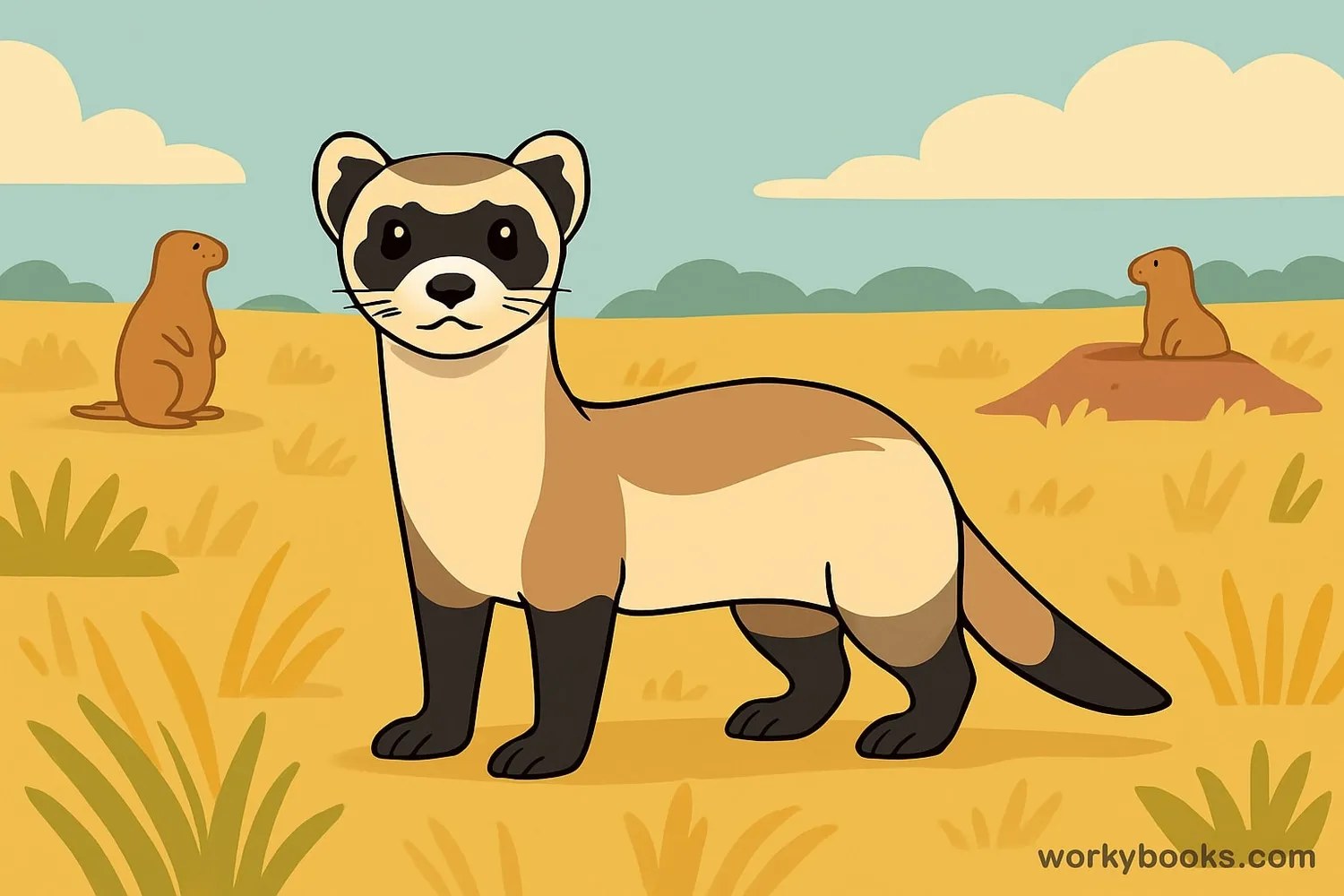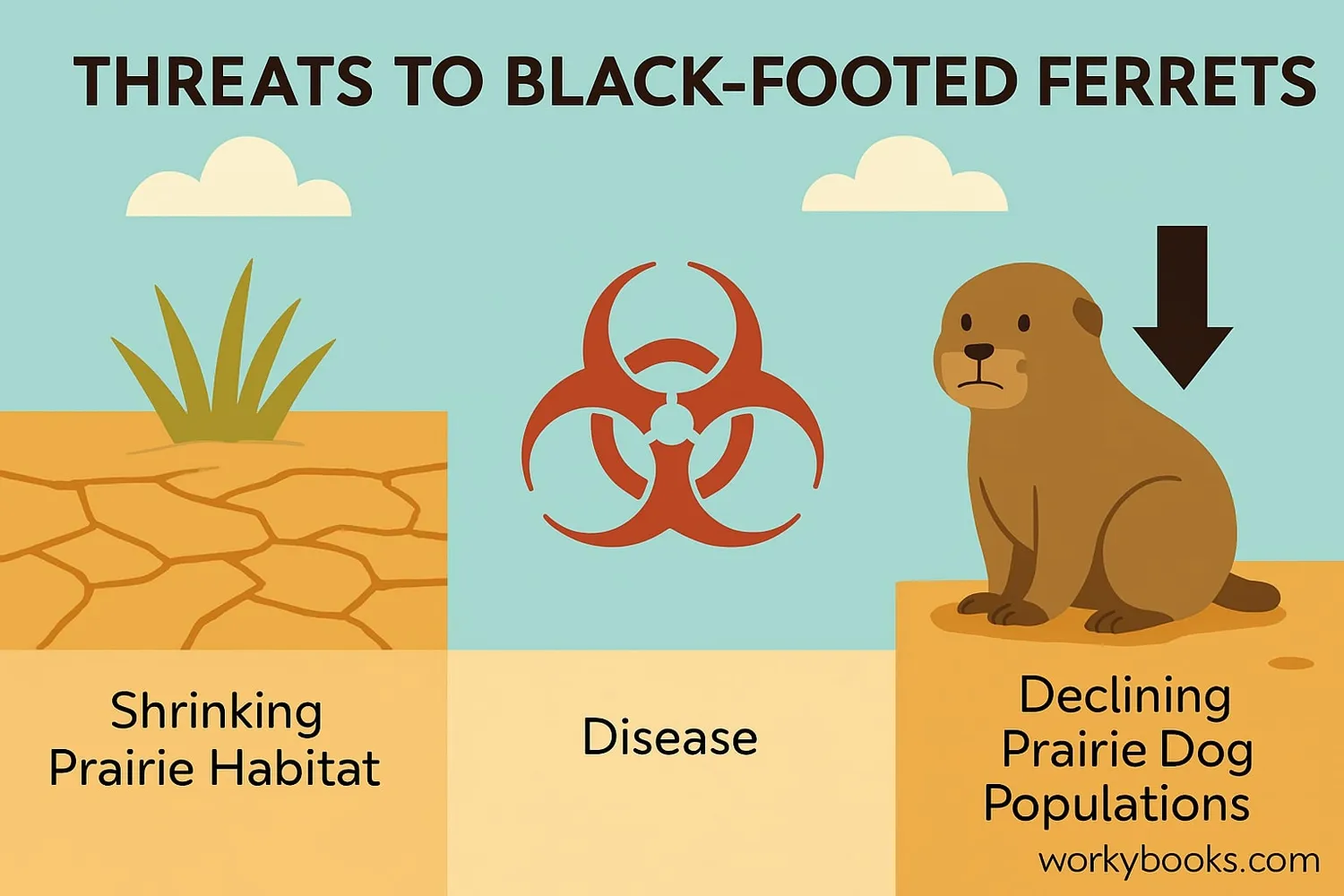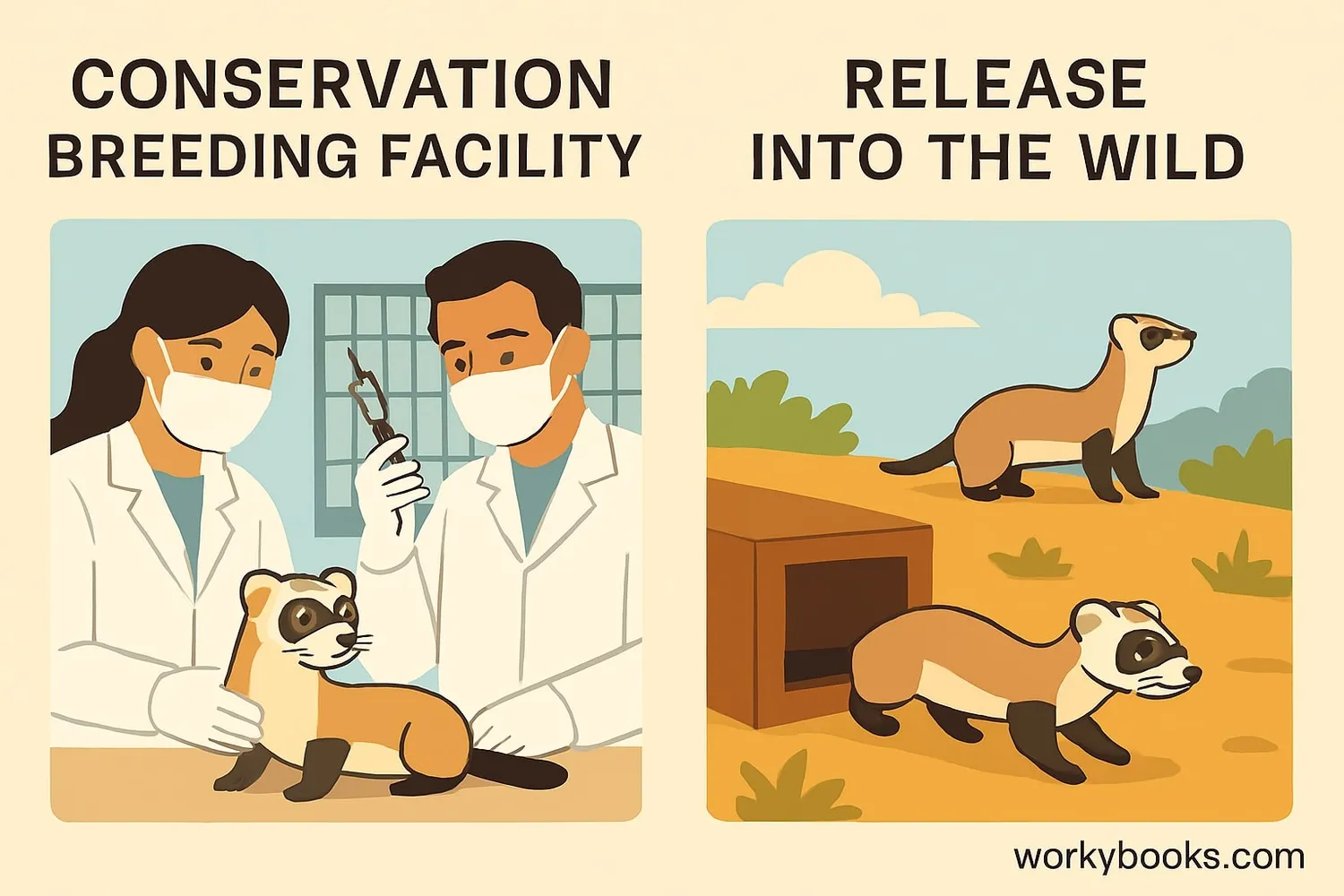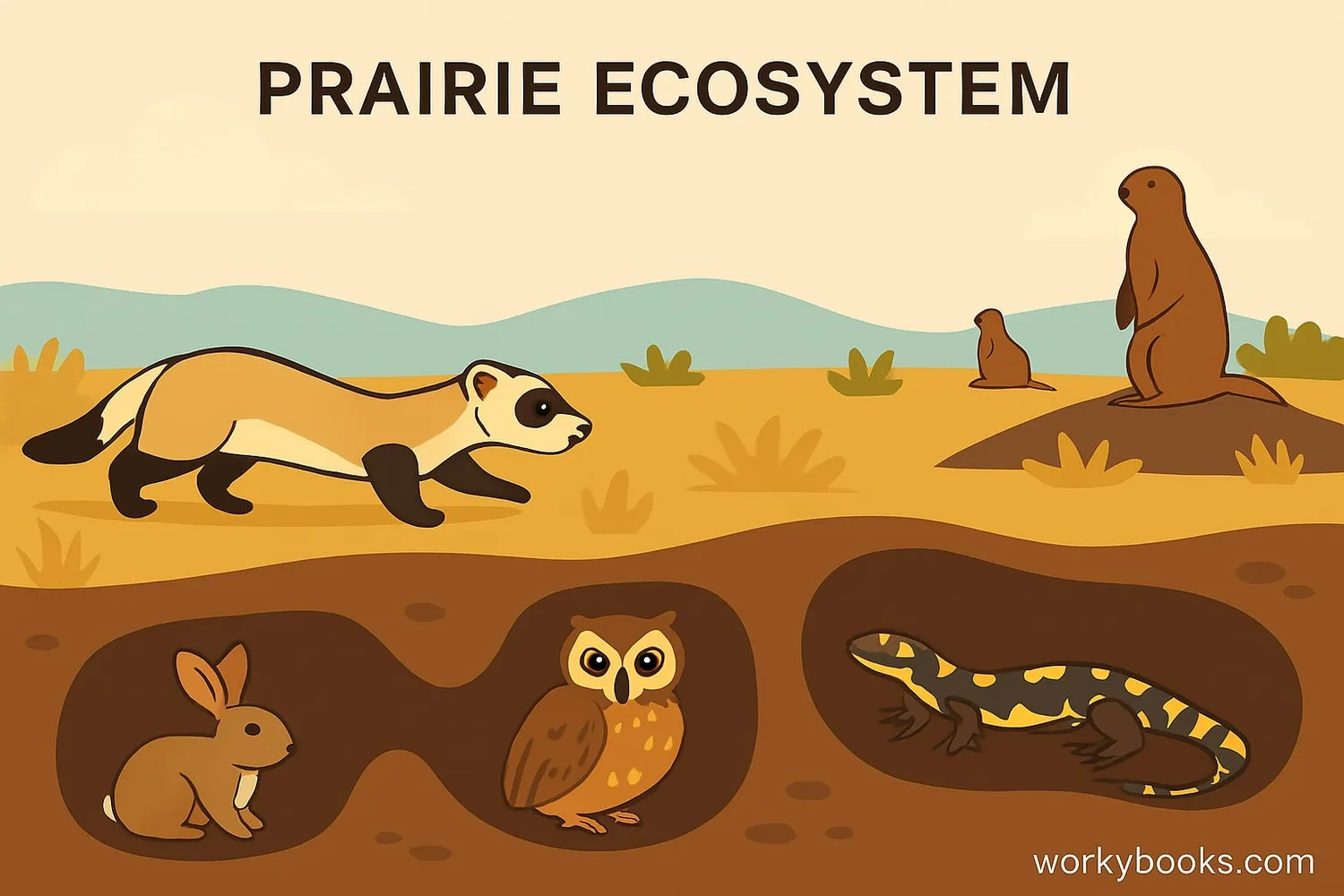Black-footed Ferret - Definition, Examples, Quiz, FAQ, Trivia
Discover North America's most endangered mammal and its incredible recovery story
What is a Black-footed Ferret?

The black-footed ferret is a small, nocturnal mammal that's native to North America. These fascinating creatures are easily recognized by their distinctive black mask around the eyes and black feet. They have long, slender bodies perfect for moving through prairie dog tunnels.
Key facts:
• Scientific name: Mustela nigripes
• Size: 18-24 inches long (including tail)
• Weight: 1.5-2.5 pounds
• Lifespan: 3-4 years in the wild
• Habitat: Prairie grasslands
• Diet: Mostly prairie dogs (90% of their diet)
Did You Know?
Black-footed ferrets are the only ferret species native to North America and were once thought to be extinct!
Why They're Endangered

Black-footed ferrets are North America's most endangered mammals. By the 1970s, they were thought to be extinct! Here's what caused their decline:
Habitat Loss
Conversion of prairies to farmland destroyed their homes
Prairie Dog Decline
Poisoning and shooting of their main food source
Disease
Sylvatic plague killed both ferrets and prairie dogs
By 1987, there were only 18 black-footed ferrets left in the world! Conservationists captured these last survivors to start a breeding program and save the species from extinction.
Conservation Milestone
In 1981, a dog named Shep brought home a dead black-footed ferret, leading to the discovery of the last wild population!
Conservation Efforts

The black-footed ferret recovery program is one of conservation's greatest success stories. Here's how scientists saved this species:
Captive Breeding
Starting with just 7 breeding animals, conservationists established breeding programs
Reintroduction
Ferrets were released into protected prairie habitats
Disease Management
Vaccines developed to protect against sylvatic plague
Habitat Protection
Prairie conservation areas established for ferrets
Thanks to these efforts:
• Over 300 ferrets now live in the wild
• Reintroduction sites established in 8 states
• Conservation breeding at 6 facilities
• First successful cloning of a ferret in 2020
Role in the Ecosystem

Black-footed ferrets play a vital role in healthy prairie ecosystems. As specialized predators of prairie dogs, they help maintain balance:
Burrow Dwellers
Ferrets live in abandoned prairie dog burrows
Population Control
They help control prairie dog populations
Ecosystem Engineers
Prairie dog towns create habitats for many species
The relationship between ferrets and prairie dogs is so close that:
• One ferret needs about 100 prairie dogs per year
• They require 40-60 acres of prairie dog colonies
• Without prairie dogs, ferrets can't survive
• Prairie dog burrows provide shelter for many animals
Ferret Knowledge Check
Test what you've learned about black-footed ferrets with this quiz!
Frequently Asked Questions
Here are answers to common questions about black-footed ferrets:
Ferret Fun Facts
Discover some amazing facts about black-footed ferrets!
Nighttime Hunters
Black-footed ferrets are nocturnal, sleeping about 21 hours each day and hunting at night. They can travel up to 6 miles in a single night searching for food!
Big Families
A mother ferret (called a jill) can have 3-4 kits at a time. The kits stay underground for about 6 weeks before emerging to learn how to hunt from their mother.
Genetic Rescue
In 2020, scientists cloned a ferret named Elizabeth Ann from cells frozen in 1988. This genetic diversity could help strengthen the entire species against disease!
Underground Experts
Ferrets are perfectly adapted to life underground. They can turn around in tight tunnels, have excellent low-light vision, and use whiskers to navigate in complete darkness.


